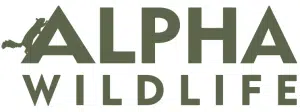Norway Rats
Norway rats, also known as brown rats, are robust rodents with a reputation for being the most common rat species encountered by homeowners and businesses. Characterized by their brown or gray fur and shorter tails relative to their body length, Norway rats are ground dwellers that prefer to burrow under buildings, along fences, and under plants or debris.
These rats are known for their strong swimming abilities and can often be found in sewers and other wet environments. Norway rats pose significant health risks by spreading diseases and damaging property through their gnawing.
Norway Rats Diet
Norway rats are omnivores with a diet that includes a wide range of foods, from grains, seeds, and fruits to meats and fish. They are known to scavenge in trash and compost piles, making them a common pest around homes and commercial properties. Their ability to consume almost anything makes them particularly resilient pests, capable of thriving in various environments and challenging to control without professional help.
Norway Rats Scat
Norway rat scat is blunt and capsule-shaped, typically larger than that of roof rats, measuring about 3/4 inch in length. It is usually found in concentrated areas as Norway rats select specific spots to deposit their droppings. Identifying Norway rat scat is essential for recognizing an infestation, prompting immediate action to mitigate health risks and property damage. Proper handling and disposal of rat scat are crucial to avoid contamination and spread of diseases.
Norway Rats Tracks
The tracks of Norway rats are often more visible than those of roof rats due to their preference for ground-level travel. Their footprints show four toes on the front feet and five on the hind feet, with a characteristic dragging mark from their tail in soft or muddy surfaces. Tracking Norway rat movements can help in determining the extent of an infestation and in targeting control measures effectively.


